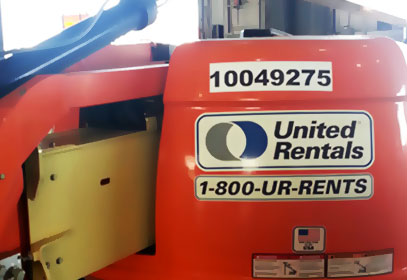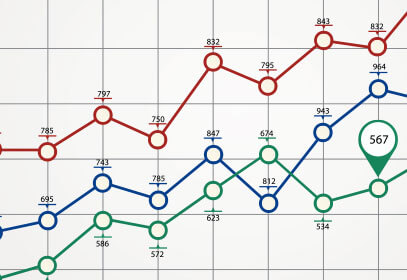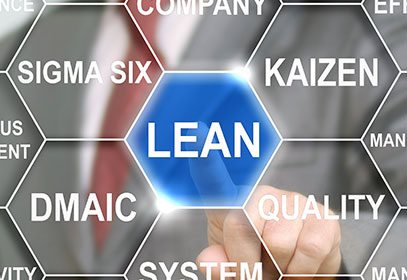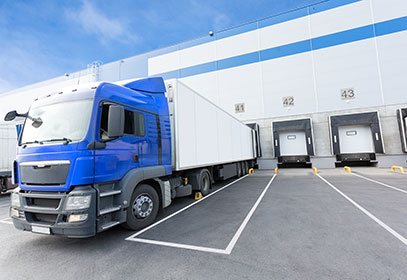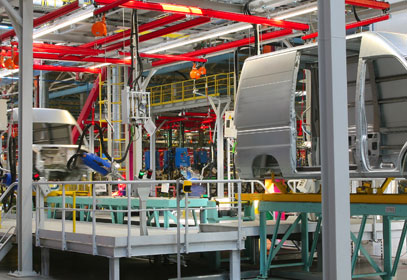Resources
Kaizen Articles
What is Toyota Lean Management?
Learn how to build a strong and efficient organization by implementing Toyota Lean Management principles to eliminate waste and improve business efficiency. …
Lean in Different Industries
The Lean methodology originated in the manufacturing sector, buit its core principles of continuous improvement, process optimization, and employee empowerment can be effectively applied across a wide range of industries. …
Control Charts: A Basic Component of Six Sigma
Statistical process control charts are a helpful visualization tool for recognizing deviation within a process. These charts help operators know when to take action. …
Peter Drucker: The Founder of Modern Management Studies
Known as the founder of modern management, Peter Drucker published 39 books and was an incredible resource as society transitioned into the 21st century. …
James Womack and the Creation of the Lean Enterprise Institute
Learn all about James Womack, the author of The Machine that Changed the World and the founder of the Lean Enterprise Institute, a notable figure in Lean history. …
John Krafcik and the Birth of the Term Lean
Learn all about where the term Lean came from in this article! You’ll read about John Krafcik and his initial studies on Lean production methods. …
William Edwards Deming: The Father of Quality Management
William Edwards Deming was incredibly influential in the world of quality management, and by extension, the development of Lean manufacturing. Learn about him here. …
A Look at Training Within Industry (TWI)
Training within Industry, or TWI, uses a series of training modules to develop leaders within a business that then train new employees quickly and effectively. …
Staying Lean During a Pandemic
It’s important to stay focused on efficiency as the COVID-19 pandemic continues. Here are several Lean manufacturing techniques that can help your business continually improve, even during times of crisis. …
Understanding the Principles of Lean Construction
When Lean techniques are incorporated into traditional methods of construction, a project is completed more efficiently. These are the main principles behind Lean Construction. …
Understanding the SIPOC Diagram in Six Sigma
Creating a SIPOC diagram to determine the Suppliers, Inputs, Process, Outputs, and Customers of an operation can help businesses achieve improvement and ensure Six Sigma success. …
Quality, Health, Safety, Environment (QHSE) Management Systems
Quality, Health, Safety, Environment (QHSE) management systems help businesses achieve three main objectives: enhanced quality, worker safety, and environmental sustainability. …
Understanding Design for Six Sigma (DFSS)
DFSS is an improvement technique that uses the DMADV approach to ensure that a product or service meets customer expectations as it is originally introduced to the market. …
Supply Chain Management (SCM)
A smooth and efficient supply chain ensures quality products, customer satisfaction, and a positive reputation. These are the essential components to effective supply chain management. …
Kaizen and Lean Manufacturing
Going “Lean” is all about continuous improvement. Kaizen gives Lean manufacturers the tools and strategies they need to identify wastes in their facility and effectively eliminate them. …
A Brief History of Kaizen: The Key Players
Kaizen has been shaped over the years by an automobile manufacturer, American statisticians, influential businessmen, and more. We explore who had a hand in creating Kaizen and how it has developed into the philosophy we know today. …
An In-Depth History of the Kaizen PDCA Cycle
Lean organizations focus on improving all parts of a process from start to finish in order to increase the quality of the results. Through the use of specific cycles (like PDCA), organizations can improve the processes and end products. …
Quality Management Systems (ISO 9001:2015)
ISO 9001: 2015 is a standard that outlines and defines requirements for a quality management systems. This QMS certification allows companies to demonstrate to clients that they take quality and efficiency seriously. …
DMAIC Cycle
The DMAIC cycle is the foundational method of Six Sigma, the Lean manufacturing method that radically reduces defects in production and infinitely improves efficiency. Learn how to implement Six Sigma into your facility with DMAIC. …
Quality Control in Manufacturing
Quality control in manufacturing is essential to maintaining a good customer base and keeping rework costs down. …
5S Lean Training
If you’re new to the concept of 5S, you’ve probably feel confused. This article aims at providing clarity and setting you on the path toward understanding 5S and Lean. …
Barcode Labeling
Barcode labeling can help improve efficiency and overall accuracy when working with individual items. Learn how barcode labeling can help improve your business today. …
Six Sigma Certification
Are you wanting to learn more about Six Sigma certification? Review this basic information on what it takes to become Six Sigma certified. …
Critical Path Method
The critical path method (CPM) is a tool for planning and managing projects. The method can help you create and execute a project schedule, and it’s designed to maximize efficiency. …
Mass Production
Mass production is simply the manufacturing of a large number of identical or very similar products. This type of production has been around for a long time, and it has its advantages and disadvantages. …
House of Lean
The house of lean involves strategic planning and understanding to establish results of efficiency, safety, and process improvement. …
What is QCDSM?
QCDSM: Quality, Cost, Delivery, Safety and Morale. Learn how this simple lean principle can help your business. …
8 Wastes of Lean [A Guide to Manufacturing Wastes]
The 8 Wastes of Lean is a much-needed update to the what the Toyota Production System called the 7 Wastes of Lean. Fighting these wastes head on will help your facility run more smoothly and efficiently. …
Supply Chain Integration
Supply chain integration refers to the process of integrating all parts of fulfillment into one single system. Learn the steps to get your supply chain integrated into an easy-to-manage system. …
Organizational Development Process
Organizational development process is an improvement methodology designed to take known problems and implement changes in order to overcome them. …
What is a thermal printer? (direct transfer)
Thermal printers are essential to printing in an industrial setting. Learn about the two types of thermal printing to determine which one suits your facility’s needs. …
Tool Storage Ideas
Lean manufacturing emphasizes organization, but it can be difficult figuring out just how to get started. This article lays out some common and effective ways of getting organized quickly. …
What is Jishuken?
Are you a leader looking to understand the benefits of Jishuken? We breakdown the definition of Jishuken and how it can improve efficiency in your workplace. …
What is a Kaizen Event? [Planning and Execution]
Learn how to implement a kaizen event and improve your lean manufacturing strategy. …
Asset Tags: Tracking Inventory & Equipment
A simple yet powerful organization tool, asset tags reduce theft, enhance inventory management efforts, and make it easier for employees to find exactly what they need exactly when they need it. …
Calculating Overall Equipment Effectiveness (OEE)
Are your lean and 5S efforts making a difference? Crunch the numbers on OEE to find out! …
Statistical Process Control (SPC) in Manufacturing
Statistical Process Control also known as SPC, is a term used in quality control. Find out how you can use this continuous improvement method. …
Quality Circle
Quality circle is a group of employees within the same job role that collaborate together to discuss ways to fix or improve processes. Learn more › …
The Five Whys (Root Cause Analysis)
Finding the root cause of a problem is imperative in problem solving. The "five whys" will help you find the root cause and prevent future issues. …
5 Lean Principles for Process Improvement
Learning the basics about the lean process is essential when implementing continuous improvement changes. We have broken down the lean process so its easy to understand. …
Cross-Docking (Understanding Efficient Warehouses)
Cross docking is a logistical strategy where products and materials are unloaded from one inbound sourceand then immediately moved onto outbound transportation with as little storage time as possible. …
Continuous Improvement (A Kaizen Model)
Facilities that focus on continuous improvement become more competitive over time and can maintain their advantages in their industry, but only if the improvement efforts are done correctly. …
FOCUS-PDCA
FOCUS-PDCA is a business strategy designed to help improve processes. It is an acronym for the steps and actions that need to take place during the process improvement period. …
Getting Started with Kaizen
Proper training is key for getting started with Kaizen and on the road to continuous improvement. …
Kaizen (Lean Continuous Improvement)
The concept of Kaizen will help any organization through continuous improvement. …
Kaizen Questions and Answers
How can Kaizen be Used to Transform The Workplace?
Kaizen is growing in popularity as its capabilities to completely reshape a business to achieve operational excellence are becoming more well known. In today’s day and age, organizations need to adapt to the ever changing environment around them, so in this article, we discuss some examples of how Kaizen can benefit continuous improvement efforts in… …
How does Kaizen Training improve Workforce Development?
Welcome to the world of Kaizen - a Japanese philosophy that stands for ‘continuous improvement.’ This blog post unravels how Kaizen Training can powerfully reshape workforce development, enhancing efficiency across all levels of your organization. It’s time to discover how this proven strategy could revolutionize the way you do business. Dive in to unlock the… …
What does the Kaizen Process look like?
In the world of manufacturing, standing still means falling behind, and the surest remedy against this stagnation is continuous improvement. Welcome to our deep dive into Kaizen - a transformative philosophy hailing from post-war Japan, now a cornerstone of Lean Manufacturing globally. In essence, Kaizen explores how small, consistent tweaks can accumulate to create monumental… …
Where did Kaizen come from?
Kaizen is a Japanese word that means "continuous improvement" or "change for the better". It is a philosophy and approach to work that emphasizes small, incremental changes over time to improve efficiency, quality, and overall performance. This mindset originated in the manufacturing sector but can be applied to any area of business or personal development. Understanding… …
What does Kaizen Management look like?
Imagine increasing productivity, reducing waste, and optimizing efficiency without investing in costly technology or equipment. Sounds too good to be true? Welcome to the powerful world of Kaizen Management – a strategy that promises, and delivers, these business enhancements through the simple principle of continuous improvement. Rooted in Japanese business philosophy, Kaizen paves the path… …
How are Lean Manufacturing and Kaizen related?
Kaizen and Lean Manufacturing are both focused on continuous improvement within an organization. While Lean Manufacturing is a broader philosophy that seeks to eliminate waste and improve efficiency throughout the entire production process, Kaizen is a specific methodology that involves continuous incremental improvements made by employees at all levels of the organization. Implementing a Kaizen… …
What are Kaizen Events about?
Striving to squeeze more efficiency from your processes? Curious about cutting waste, ramping up productivity, and injecting innovation into your operations? In today's constantly fluctuating business world, continuous improvement has emerged as a strategic necessity, and one of its most potent tools is the Kaizen Event. This blog post will provide you with a detailed… …
What is Kaizen Continuous Improvement?
Are you searching for an effective strategy to enhance your business processes, boost productivity and, ultimately, ensure long-term success? Look no further; Kaizen Continuous Improvement might be the “magic” formula your company needs! This Japanese philosophy based on small, consistent changes can revolutionize your current operations in ways you've hardly imagined. And when paired with… …
What are Kaizen Reports?
Anyone who has gone through a Kaizen event knows that gathering data from before the event takes place, and then again after it is completed, is very important. This is how you can determine whether the event was a success, and will also help you to be in a position where you can better determine… …
What is the Difference Between Kaizen Events and Rapid Improvement Events?
All businesses are constantly working at improving what they do, even if the business owners don’t really put a name to the process of making improvements. Because of the essential nature of improvement in business, there are many different concepts and strategies that are used to make positive changes. One of the most popular ways… …
How are Kaizen events run?
Kaizen events are actions that are taken within a facility to try to improve an existing process. While most people think of Kaizen events only as major changes to processes, that is not always the case. Companies can engage in this type of event to address issues with smaller processes as well. The important thing… …
What is the Kaizen method?
The Kaizen method is a strategy used by companies to help facilitate continuous improvement. The name comes from the Japanese terms Kai, which means change, and zen, which means good. In this case the best translation to English is that it means ‘change for the better.’ This has been a popular system for quite a… …
What does PDCA mean?
PDCA is an acronym that stands for, ‘Plan, Do, Check, Act.’ In some cases it is said to stand for, ‘Plan, Do, Check, Adjust’ instead. Either way, the concepts are the same and the processes that companies are following will be the same. It is a simple option for helping a business with the goal… …
What is PDCA?
PDCA is a very popular system used for problem solving and process improvement in businesses around the world. It stands for, ‘Plan, Do, Check, Act.’ PDCA is a cyclical system applied in business to keep improving things with the goal of eliminating any type of defects, waste, or other problem. Companies should never settle for ‘good… …
What are quality circles?
A quality circle is a group of workers who do similar types of work and meet regularly to attempt to identify and solve work-related issues. In most cases this is a volunteer group of people who meet during work hours. While each company can have them set up differently, the quality circle will typically be… …
How does Kaizen work?
Kaizen might be performed on a daily basis and goes beyond improving productivity. Employees are encouraged to use scientific methods to improve their own tasks to make things more efficient. Some businesses use daily Kaizen. Some business use Kaizen events. Other businesses use a combination of the two. Daily Kaizen Daily kaizen is something everyone can participate… …
What does Kaizen mean?
The literal definition of the Japanese word Kaizen is “change for the better,” however, over time the definition has transformed to “continuous improvement.” This interpretation has been taken to heart in multiple different business practices like healthcare, life coaching, banking, etc. The focus, however, has centered around the manufacturing world as well as business practices. There… …
Is Kaizen the same as Lean?
Kaizen and Lean are terms often used interchangeably but are in fact two separate entities. Both are different concepts, tools, and strategies used to solve specific problems in different ways. Kaizen and Lean both focus on similar key components. Lean manufacturing is a business model while Kaizen can be defined as a philosophy and a methodology,… …
How does Kaizen reduce waste?
The Kaizen methodology is based on continuous improvement in the facility. Using Kaizen means constantly looking for incremental improvements that will help to improve processes. The end result is often times reducing or eliminating waste. The following are just a few examples that stem from the 8 Wastes of Lean. Defects in the end product:… …
What are Kaizen principles?
Kaizen can be broken down into many things: keys, principles, foundation elements, etc. Whatever you would like to classify it as, the following list is a compilation of components that make up Kaizen. Continuous improvement: The core of Kaizen, continuous improvement should also be at the core of every Kaizen activity and Kaizen event. The… …
How does Kaizen reduce cost?
Kaizen and continuous improvement work to improve two things: processes and end results. Continuous improvement is focused on making small changes and improvements around the facility that eventually add up to major beneficial changes in the manufacturing process and quality of the product or service. The improvement in these two areas result in a reduction… …
Where can Kaizen be implemented?
Like in Toyota, the principles of Kaizen can be implemented in nearly every level of a company, from the production line up to management. At the core of Kaizen is the incremental improvements in the manufacturing processes. What sets Kaizen apart however, is the involvement of people form every level of the company. It is… …
When should Kaizen be used?
Kaizen can either be used to address a single issue or part of the process, or it could be an ongoing practice used on a day-to-day basis. If a company chooses to implement Kaizen as a daily event, it is important to note that it is a daily and continuous strategy and a facility can… …
Is there a difference between Kaizen and continuous improvement?
There is not so much a difference between Kaizen and continuous improvement, but rather continuous improvement is a core principle to the Kaizen methodology and philosophy. Literally translated, Kaizen is a Japanese word meaning improvement. It is important to remember that Kaizen is not a one-time adjustment but rather an ongoing process. Kaizen believes not in… …
What companies use Kaizen?
Many companies successfully use Kaizen and Lean principles to inspire continuous improvement around the facility. Kaizen help companies around the world to cut down on wastes and streamline processes. The most famous Kaizen company is the same company that first implemented its practices: Toyota. Toyota has been using the Kaizen philosophy for decades now and Kaizen… …
What is the difference between 5S and Kaizen?
5S and Kaizen are related in the fact that they are both concepts used in Lean manufacturing and both have the goal to improve processes and reduce wastes and are both derived from Japanese concepts. While 5S and Kaizen have the same end goal, they introduce different strategies to achieve that goal and certain situations… …
What are Kaizen events?
When a business implements Kaizen, there is a choice between implementing daily Kaizen and holding Kaizen events, or a combination of both. It is key to understand the differences between both to choose what may be right for your facility. Kaizen events are scheduled to take place during a specific set amount of time, often… …
How does Kaizen use Gemba?
Gemba, meaning 'the real place,' is an excellent tool for any company or organization using Kaizen. In Kaizen, the phrase “Go to Gemba first” is actually often used. Gemba and Gemba walks are tools for managers and supervisors to go to where the action is or where the process is completed. This can be a… …
How can Kaizen be implemented?
One way Kaizen can be effectively implemented is by training all employees in the workplace. Kaizen can be used in the workplace as a daily practice, practiced in scheduled events, or a combination of both. A key element to Kaizen is involvement of all. Implementing Kaizen should not be kept solely between managers and supervisors,… …
Who created Kaizen?
One person or company did not create Kaizen, but rather multiple experts collaborated and created tools that would eventually evolve to what we know as Kaizen. W. Edwards Deming, an American management consultant and statistician, built upon Walter A. Shewhart’s concepts of statistical process controls to develop management concepts with cycles and the idea of… …
How does Kaizen improve productivity?
Kaizen is a productivity philosophy originating from Japan that works to make small incremental changes in the manufacturing process. Eliminating any type of wastes in a facility will help to improve productivity and the methodology of Kaizen promotes a clean and organized workspace to keep workers moving around the facility much more efficiently. While the… …
What are Kaizen techniques and tools I can use?
Kaizen offers a variety of tools and strategies a business can use to continually improve. Below are just a few techniques and tools that will aide in the implementation of Kaizen: PDCA Cycle: PDCA cycles are cycle that is often implemented when completing Kaizen strategies. This cycle can be used employees of all levels in… …
What is Kaizen?
Kaizen is a Japanese term that is translated to mean “change for the good.” Kaizen is both a methodology and philosophy that can be implemented in manufacturing facilities, warehouses, and production lines. It originated in Japan in the 1950s becoming a crucial part of the Toyota Production System. Kaizen often makes a noticeable impact on… …




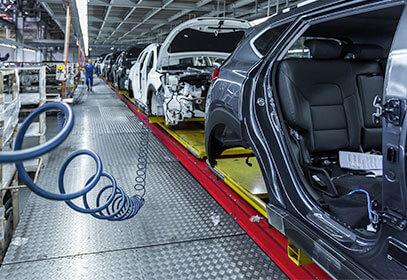
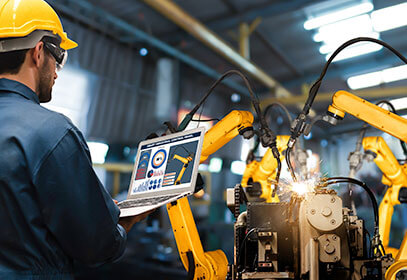















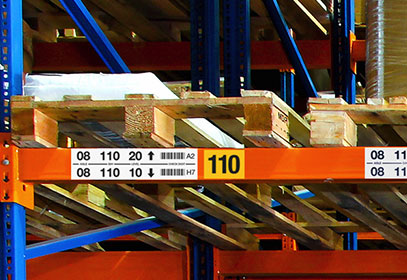





![8 Wastes of Lean [A Guide to Manufacturing Wastes]](https://www.creativesafetysupply.com/content/images/articles/8-wastes-th.jpg)


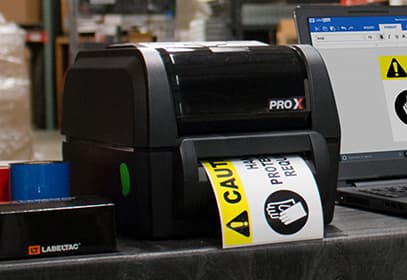
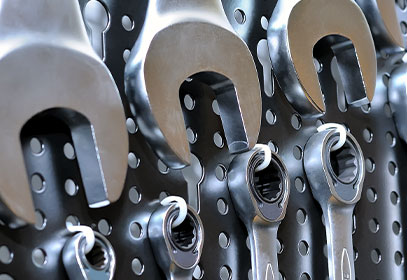

![What is a Kaizen Event? [Planning and Execution]](https://www.creativesafetysupply.com/content/images/articles/kaizen-event-th.jpg)
